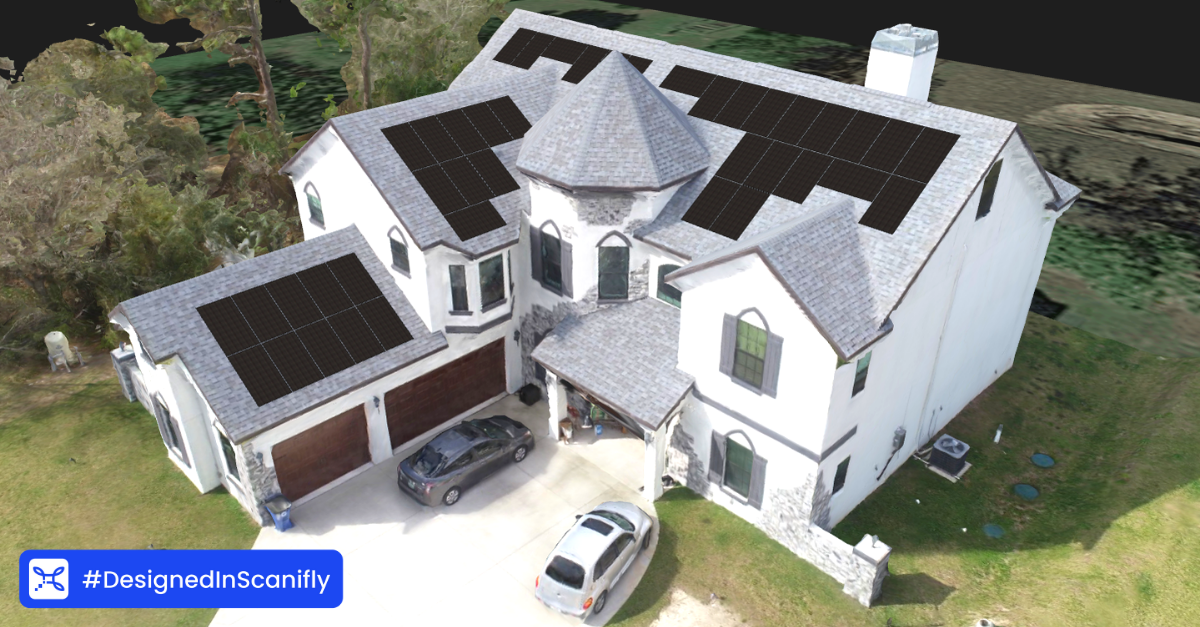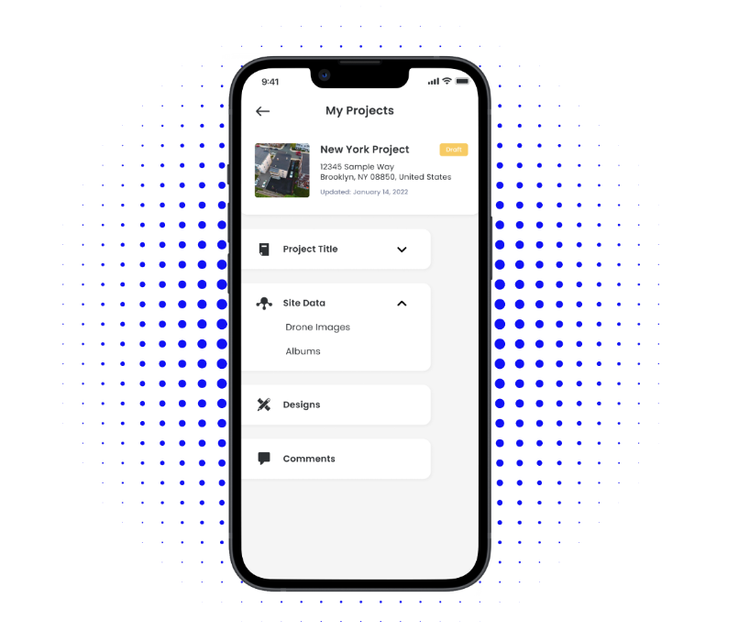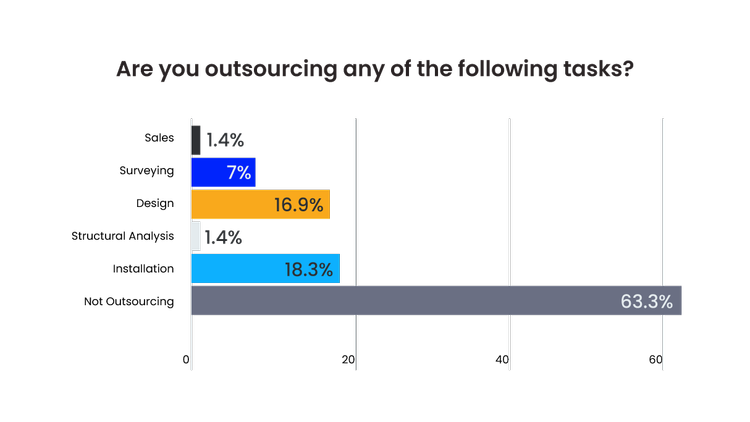from the 2021 Solar Surveyor & Designer Outlook
Outsourcing is a new growth lever in solar.
In 2023, over two-thirds (67.1%) of Designers report outsourcing at least ten percent of project volume, and 13.4% report they always outsource something.
This is a complete flip from just two years ago—in 2021, the majority of solar contractors (63.3%) did not outsource any tasks.
What’s driving the change? In a word: quality.

from the 2023 Solar Designer Outlook
A Brief History of Solar Design Outsourcing
Historically, outsourcing in solar focused on cost efficiency and speed. However, third-party designers have operated a bit like a black box. Here’s what the process looked like:
-
Surveyors would collect satellite data or manual field measurements.
-
During any site visits, Surveyors would take photos from whatever angle they could.
-
All images would be sent to a third party who had to decipher site context from the images, then create a design.
The result was cheap and fast but at the expense of quality.
For a time, that worked; then Contractors started demanding more. Not only did they want higher quality designs, but they wanted more collaboration and communication with third parties.
A New Design Paradigm
Evolutions in technology have brought quality back into the equation.
1. Drone images provide real-time site context
On-site surveys using drones will give you hundreds of high-quality, real-time images on the x, y, and z axes. This means full sight context when using a Point of Interest (POI) flight path rather than a top-down image.
From an outsourcing perspective, this means all obstructions, trees, and property context are easily noticeable. Further, all data is digital, so no Designer has to read hand-written measurements or decipher hand-drawn roof plans.
2. 3D models give Designers a better feel for the home
Working from drone images means you can easily create a to-scale virtual replica 3D model that visually shows the roof’s contours, obliques, and obstructions using Scanifly software. Working from satellite or other remote imagery, on the other hand, will typically give an orthomoasic image on a skew, resulting in more work for the Designer (or requiring them to use best guesses rather than accurate data).

An example of a Scanifly 3D model
Designing from drone images in Scanifly means that any third party will still feel like they are “walking around” the site. This leads to higher quality designs because they can truly visualize themselves as part of the project rather than trying to estimate fit or shading from ad-hoc context photos.
3. Mobile applications mean a single source of truth for images
Some information cannot be seen with drones or a 3D model–in particular, interior survey data. Most Surveyors simply take pictures on their phones, but that creates a hassle for sharing files with any third parties. Scanifly’s new mobile app addresses this concern. Surveyors can take pictures directly in the app, ensuring all data is stored automatically in the correct project.

Scanifly’s new mobile app for solar surveying
Within the app, Surveyors can easily categorize images for electrical versus structural, making it even easier for third-party Designers to know precisely what they are looking at.
4. Comments and markups improve collaboration visibility and accountability
A key challenge when outsourcing is the “black box feeling” that Contractors get. You send data to a third party and… are left hoping for the best.
That’s no longer the case. In both the mobile and desktop Scanifly app, all stakeholders–both in-house and third-party–can leave comments to each other. This means additional context, categories, questions, and responses are captured natively within the app for free-flowing, transparent, collaborative dialogue.
Outsourcing Can Be Synonymous with Quality
Third-party designers can deliver high-quality, quick results. They just need to be empowered with the right technology. When you work within a single platform like Scanifly, you ensure all data has a single source of truth that promotes collaboration.
The result is that outsourcing partners become an extension of your business. They work with and for you, rather than sitting as a siloed team on the outside. Not only does this mean a better working experience for all involved, but it means a better output that makes customers happy and keeps your operation lean as you grow.






